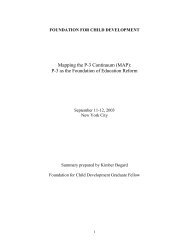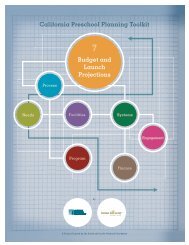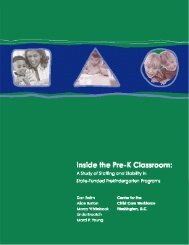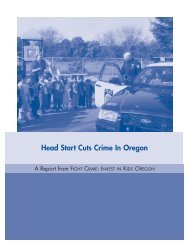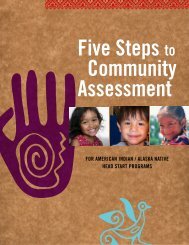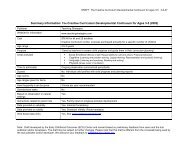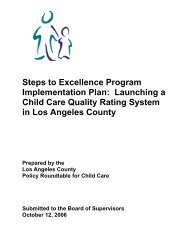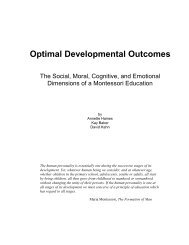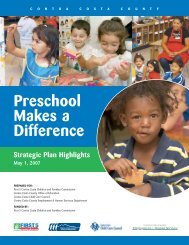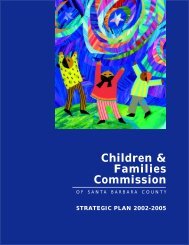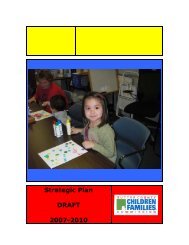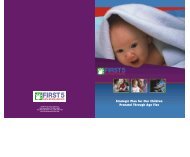Download this file - Plan4Preschool
Download this file - Plan4Preschool
Download this file - Plan4Preschool
You also want an ePaper? Increase the reach of your titles
YUMPU automatically turns print PDFs into web optimized ePapers that Google loves.
Educational Partnerships <br />
Family Involvement<br />
California has been an unparalleled leader in advocating partnerships between families,<br />
teachers, and schools to help children succeed academically and develop as socially,<br />
physically, and emotionally healthy individuals. In 1989, the State Board of Education<br />
(SBE) adopted, and revised in 1994, a policy on family involvement that encourages<br />
school boards to establish comprehensive, long-term efforts to involve families in their<br />
children’s education.<br />
The State Legislature passed the first parental involvement law in the nation in 1990<br />
(California Education Code [EC], Chapter 16, “Programs to Encourage Parental<br />
Involvement”). This law requires all school districts to adopt a parental involvement<br />
policy approved by their local school boards. In addition, the law requires districts with<br />
designated categorical programs to have a parental involvement program.<br />
The California Strategic Plan for Parent Involvement in Education (1992) recommends<br />
ways in which all levels of the educational system may comply with state and federal<br />
mandates for parental involvement. In addition, the SBE policy recommends that<br />
districts and schools initiate partnerships that support six effective roles for families and<br />
educators:<br />
• Provide learning opportunities for educators to meet their basic obligation to work<br />
effectively with families and for families to meet their basic parenting obligations.<br />
• Ensure systematic, two-way communication (school to home and home to school)<br />
about the school, school programs, and students’ progress.<br />
• Provide learning opportunities for educators and families to work together so that<br />
both can fulfill a wide range of support and resource roles for students and the<br />
school.<br />
• Provide educators and families with strategies and techniques for connecting<br />
children and learning activities at home and in the community with learning at<br />
school. <br />
• Prepare educators and families to participate actively in school decision making<br />
and to exercise their leadership and advocacy skills.<br />
• Provide educators and families with the skills to access community and support<br />
services that strengthen school programs, family practices, and student learning<br />
and development.<br />
The Family-School Partnership Act of 1994, expanded by Assembly Bill 47 (1997),<br />
permits parents, grandparents, and guardians to take up to 40 hours of leave time from<br />
work to participate in their child’s licensed day care through twelfth-grade educational<br />
activities. Furthermore, a series of “parents’ rights” were defined by AB 1665<br />
(Torlakson, 1998) (EC sections 51100—51102). Additional information is available on<br />
the Parent Involvement Web site at http://www.cde.ca.gov/ls/pf/pf.<br />
64



